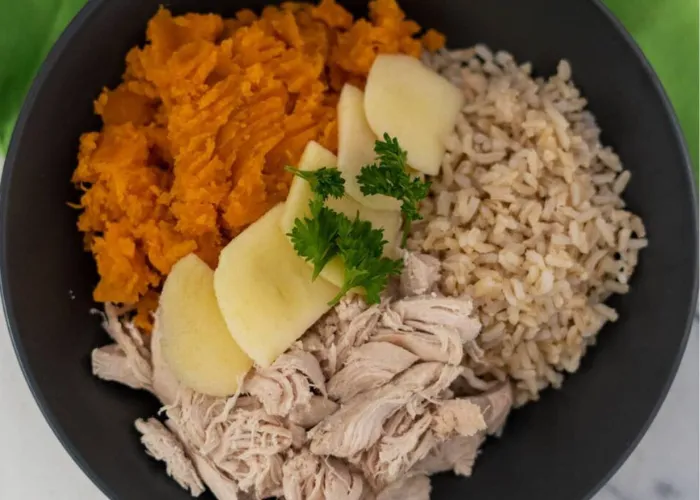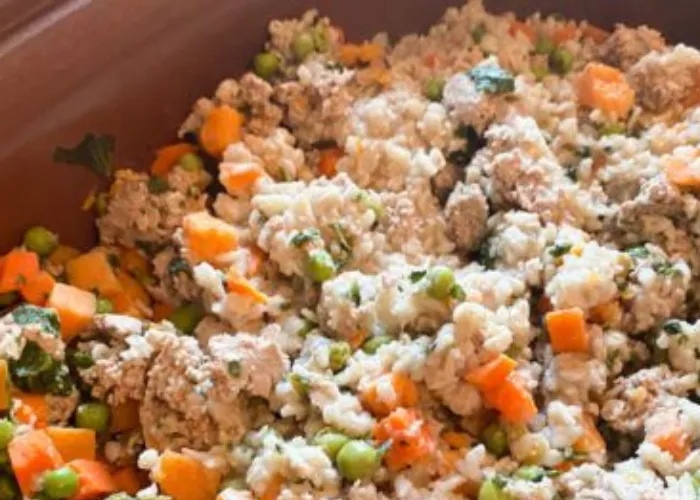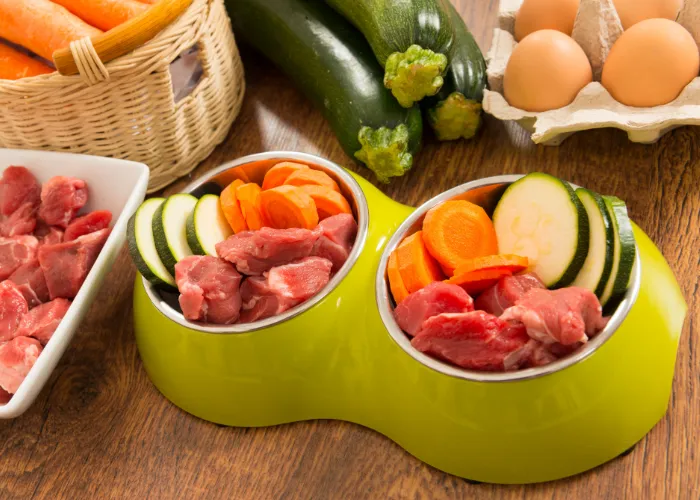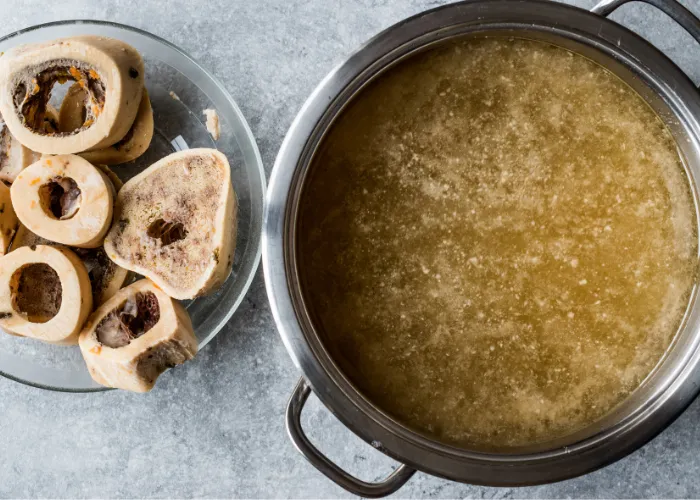Is your dog constantly scratching, experiencing hair loss, or suffering from itchy skin? It could be due to allergies, which can be incredibly distressing for your beloved pet. By switching to homemade dog food, you can address their specific dietary needs and potentially alleviate these discomforting symptoms. This comprehensive guide will explore the causes and common symptoms of skin allergies in dogs, highlight the significant benefits of a homemade diet, provide a list of 10 expertly crafted recipes, and offer essential tips for successfully transitioning your dog to homemade meals. Our goal is to help minimize issues like hot spots, ear infections, and flea allergy dermatitis, fostering a healthier, happier life for your companion.
Feeding guidelines are general, and proteins should be adjusted according to your dog’s specific dietary requirements. A good starting point for portion size is approximately 1/2 cup of food per every 10 lbs of your dog’s body weight. Remember to consult with your veterinarian to ensure these recipes meet your dog’s unique nutritional needs, especially if they are a small breed dog with specific dietary sensitivities.
What Causes Skin Allergies in Dogs and How to Identify Them
Skin allergies in dogs are a common concern, triggered by a variety of factors including food sensitivities, environmental allergens like dust mites and pollen, and even flea saliva. Identifying the specific allergen is crucial for effective management. Common symptoms often manifest as persistent itching, excessive scratching, noticeable hair loss, red or inflamed skin, and recurring skin infections. You might also observe ear infections, hot spots, or symptoms indicative of flea allergy dermatitis. If your dog exhibits these signs, a veterinary visit is recommended to pinpoint the cause. Management strategies can include dietary changes, incorporating soothing grooming products such as hypochlorous acid spray or coconut oil grooming wipes, and making necessary environmental adjustments to reduce exposure to allergens.
Key Nutrients for Dogs with Allergies
When preparing Homemade Dog Food For Allergies, focusing on specific nutrients can significantly improve skin health and reduce allergic responses. Omega-3 fatty acids, abundant in fish and flaxseed oil, are crucial for their anti-inflammatory properties, helping to soothe irritated skin and reduce itching. Antioxidants, found richly in various fruits and vegetables, support a robust immune system, which is vital in combating allergic reactions. Lean proteins, such as turkey or venison, provide essential amino acids without common allergens often found in commercial pet foods. Additionally, soluble fibers, present in ingredients like pumpkin or sweet potatoes, aid digestion and promote overall gut health, indirectly supporting a stronger immune response and healthier skin.
The Benefits of Homemade Dog Food for Allergies and Itchy Skin
Opting for homemade dog food offers numerous advantages for dogs battling allergies and persistent itchy skin. One of the primary benefits is the ability to create customized meals tailored to your dog’s specific sensitivities, eliminating potential allergens often hidden in commercial pet foods. Ingredients like sweet potato are not only palatable but also known for their soothing properties on the digestive system and skin. This personalized approach can significantly support a healthier immune system, leading to a reduction in allergic reactions and potentially minimizing the need for allergy shots or medications. Furthermore, controlling every ingredient ensures your dog receives wholesome, unprocessed nutrition.
Top 10 Homemade Dog Food Recipes for Allergies
These recipes provide a foundation for a balanced, allergy-friendly diet. Always adjust quantities based on your dog’s size, activity level, and specific dietary needs, consulting your veterinarian for personalized advice.
1. Turkey and Sweet Potato Delight
Makes 2 cups of food.
Ingredients:
- 1 cup cooked and ground turkey
- 1/2 cup mashed sweet potatoes
- 1/4 cup cooked peas
- 1 tablespoon olive oil
Instructions:
- In a bowl, combine the cooked and ground turkey, mashed sweet potatoes, and cooked peas.
- Drizzle the olive oil over the mixture and mix well.
- Serve the meal to your dog, ensuring it is at an appropriate temperature.
 Cooked ground turkey mixed with mashed sweet potatoes and green peas in a dog bowl
Cooked ground turkey mixed with mashed sweet potatoes and green peas in a dog bowl
2. Salmon and Quinoa Medley
Makes 2 cups of food.
Ingredients:
- 1/2 cup cooked salmon, flaked
- 1/2 cup cooked quinoa
- 1/4 cup steamed carrots, chopped
- 1/4 cup steamed green beans, chopped
Instructions:
- In a bowl, combine the cooked salmon, cooked quinoa, steamed carrots, and steamed green beans.
- Mix the ingredients thoroughly until well combined.
- Allow the meal to cool before serving it to your dog. This recipe is an excellent option for dogs sensitive to common proteins, providing omega-3s beneficial for skin health.
3. Beef and Pumpkin Stew
Makes 1 1/4 cups of food.
Ingredients:
- 1/2 cup cooked and ground beef
- 1/4 cup pureed pumpkin
- 1/4 cup cooked brown rice
- 1/4 cup chopped spinach
Instructions:
- In a saucepan, combine the cooked and ground beef, pureed pumpkin, cooked brown rice, and chopped spinach.
- Heat the mixture over low heat, stirring occasionally, until heated through.
- Let the stew cool down before serving it to your dog.
 Hearty beef and pumpkin stew with rice and spinach in a bowl for a dog
Hearty beef and pumpkin stew with rice and spinach in a bowl for a dog
4. Chicken and Rice Casserole
Makes 1 1/4 cups of food.
Ingredients:
- 1/2 cup cooked and shredded chicken
- 1/4 cup cooked white rice
- 1/4 cup steamed broccoli, chopped
- 1/4 cup grated carrots
Instructions:
- Preheat the oven to 350°F (175°C).
- In a baking dish, combine the cooked and shredded chicken, cooked white rice, steamed broccoli, and grated carrots.
- Mix the ingredients well and spread them evenly in the baking dish.
- Bake the casserole for approximately 20 minutes or until heated through.
- Allow it to cool before serving it to your dog.
5. Lamb and Lentil Stew
Makes 1 1/4 cups of food.
Ingredients:
- 1/2 cup cooked and ground lamb
- 1/4 cup cooked lentils
- 1/4 cup pureed sweet potatoes
- 1/4 cup chopped zucchini
Instructions:
- In a saucepan, combine the cooked and ground lamb, cooked lentils, pureed sweet potatoes, and chopped zucchini.
- Heat the mixture over low heat, stirring occasionally, until warmed.
- Let the stew cool down before serving it to your dog. Lamb is often a good alternative for dogs with common protein allergies.
 Lamb and lentil stew with sweet potatoes and zucchini in a serving bowl
Lamb and lentil stew with sweet potatoes and zucchini in a serving bowl
6. Venison and Sweet Pea Blend
Makes 1 cup of food.
Ingredients:
- 1/2 cup cooked and diced venison
- 1/4 cup cooked sweet peas
- 1/4 cup cooked quinoa
- 1 tablespoon coconut oil
Instructions:
- In a bowl, combine the cooked and diced venison, cooked sweet peas, cooked quinoa, and coconut oil.
- Mix the ingredients thoroughly until well combined.
- Allow the blend to cool before serving it to your dog. Venison is an excellent novel protein source for highly allergic dogs.
7. Whitefish and Carrot Mix:
Makes 1 cup of food.
Ingredients:
- 1/2 cup cooked and flaked whitefish
- 1/4 cup steamed carrots, mashed
- 1/4 cup cooked brown rice
- 1 tablespoon fish oil
Instructions:
- In a bowl, combine the cooked and flaked whitefish, steamed carrots, cooked brown rice, and fish oil.
- Ensure the mixture is at an appropriate temperature before serving it to your dog.
- Mix the ingredients thoroughly until well combined. This is a light and digestible option, especially if your dog has pancreatitis, considering my dog has pancreatitis what can he eat.
 Flaked whitefish mixed with mashed carrots and brown rice in a pet bowl
Flaked whitefish mixed with mashed carrots and brown rice in a pet bowl
8. Turkey and Oatmeal Bake
Makes 2 cups of food.
Ingredients:
- 1 cup cooked and shredded turkey
- 1/2 cup cooked oatmeal
- 1/4 cup cooked green peas
- 1/4 cup grated zucchini
Instructions:
- Preheat the oven to 350°F (175°C).
- In a mixing bowl, combine the cooked and shredded turkey, cooked oatmeal, cooked green peas, and grated zucchini.
- Mix the ingredients well and spread the mixture evenly in a baking dish.
- Bake for approximately 25 minutes or until heated through and lightly browned.
- Allow it to cool before serving it to your dog.
9. Duck and Green Bean Delight
Makes 1 cup of food.
Ingredients:
- 1/2 cup cooked and shredded duck
- 1/4 cup cooked green beans, chopped
- 1/4 cup cooked quinoa
- 1 tablespoon flaxseed oil
Instructions:
- In a bowl, combine the cooked and shredded duck, cooked green beans, cooked quinoa, and flaxseed oil.
- Mix the ingredients thoroughly until well combined.
- Ensure the mixture is at an appropriate temperature before serving it to your dog. Duck is another excellent alternative protein for sensitive dogs. For more specific dietary considerations, especially regarding specific breeds like the Cocker Spaniel, understanding what can Cocker Spaniels not eat is vital.
 Shredded duck mixed with chopped green beans and quinoa with flaxseed oil
Shredded duck mixed with chopped green beans and quinoa with flaxseed oil
10. Homemade Bone Broth
This recipe is an additive to your dog’s meal.
Ingredients:
- 2 pounds of raw bones (such as beef or chicken)
- Water
- Optional: Vegetables like carrots and celery
Instructions:
- Preheat the oven to 400°F (200°C).
- Place the raw bones on a baking sheet and roast them in the oven for 30 minutes to enhance flavor.
- Transfer the bones to a large pot and fill it with enough water to cover the bones completely.
- If desired, add vegetables like carrots and celery for additional flavor.
- Bring the mixture to a boil and then reduce the heat to a simmer.
- Allow the broth to simmer for 8-24 hours to extract the nutrients from the bones.
- Strain the broth to remove any bone fragments or vegetables.
- Once cooled, serve the bone broth as a delicious and nutritious addition to your dog’s meals, enhancing hydration and providing vital minerals.
 A large pot of homemade bone broth simmering on a stovetop with bones and vegetables
A large pot of homemade bone broth simmering on a stovetop with bones and vegetables
Tips for Switching to Homemade Dog Food to Reduce Itching and Allergic Reactions
Transitioning your dog to a homemade diet requires careful planning and consideration to avoid digestive upsets and ensure a smooth adjustment. Start by gradually introducing the new food, mixing small amounts with their current diet and slowly increasing the proportion of homemade food over a period of 7-10 days. Closely monitor your dog’s response to the new diet, observing for any changes in their allergy symptoms, skin condition, or digestive health. Make adjustments to ingredients or recipes as necessary based on their reaction. Most importantly, consult with your veterinarian before and during this transition to ensure your dog’s specific nutritional needs are met and to address any concerns related to their allergies or underlying skin conditions. A professional can help tailor the diet to your dog’s unique health profile, ensuring they receive a balanced and complete meal plan.
Conclusion
Homemade dog food provides a natural and effective solution for managing dogs with allergies and persistent itchy skin. By understanding the common causes and symptoms of skin allergies, strategically incorporating key nutrients, and utilizing the top 10 homemade dog food recipes outlined in this article, you can significantly alleviate your pet’s discomfort. This approach not only helps to soothe irritated skin and reduce allergic reactions but also promotes a healthier immune system, minimizing the risk of secondary skin infections. Remember, a successful transition to homemade dog food demands patience and, crucially, guidance from your veterinarian to ensure your dog’s specific dietary and health needs are comprehensively met for their long-term well-being. Explore more articles on dog health and nutrition on Dog Care Story to further enhance your pet care knowledge!
